All golf training aids featured in this guide were tested by our editorial team. All photos are our own, and were taken in our testing setup.
Best Golf Training Aids
1. The Lag Shot
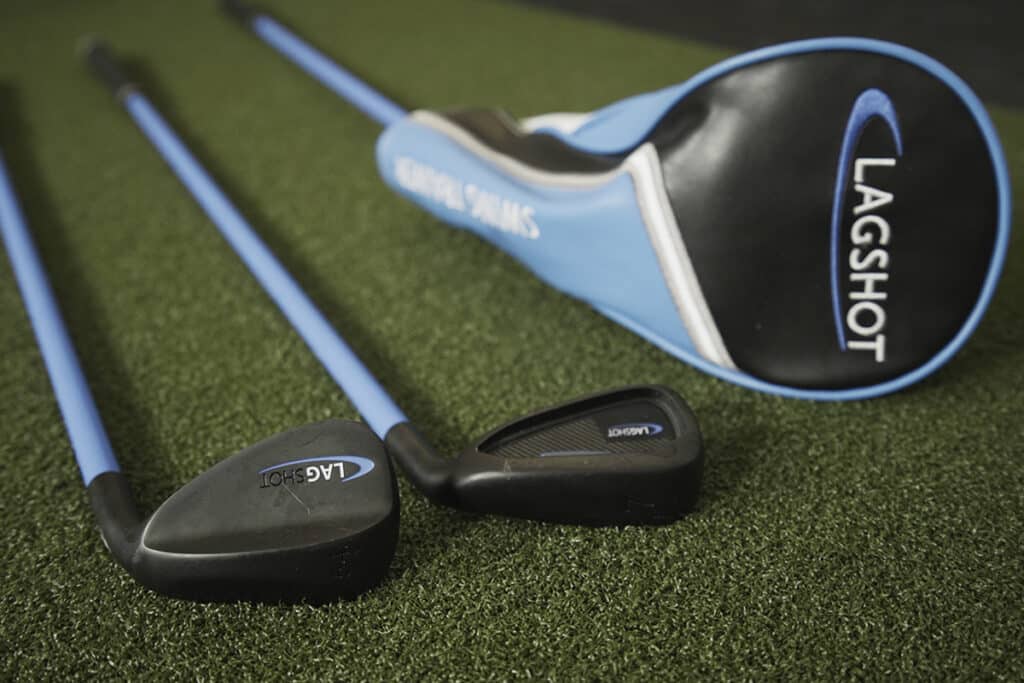
The Lag Shot is the best overall training aid right now. If you’re not familiar with it, it’s a ‘whippy club’, akin to the Orange Whip, with the big advantage being that you can actually hit balls with it. The Lag Shot is great for working on your tempo and timing, will stop you rushing transition, and will help to promote a ‘delayed hit’ with the hands leading the club at impact. Overall it will help you ‘feel’ how to swing the club correctly without having to focus on mechanics.
Available from: Lag Shot Golf (save 20% with discount code golferlogic)
2. The Orange Whip
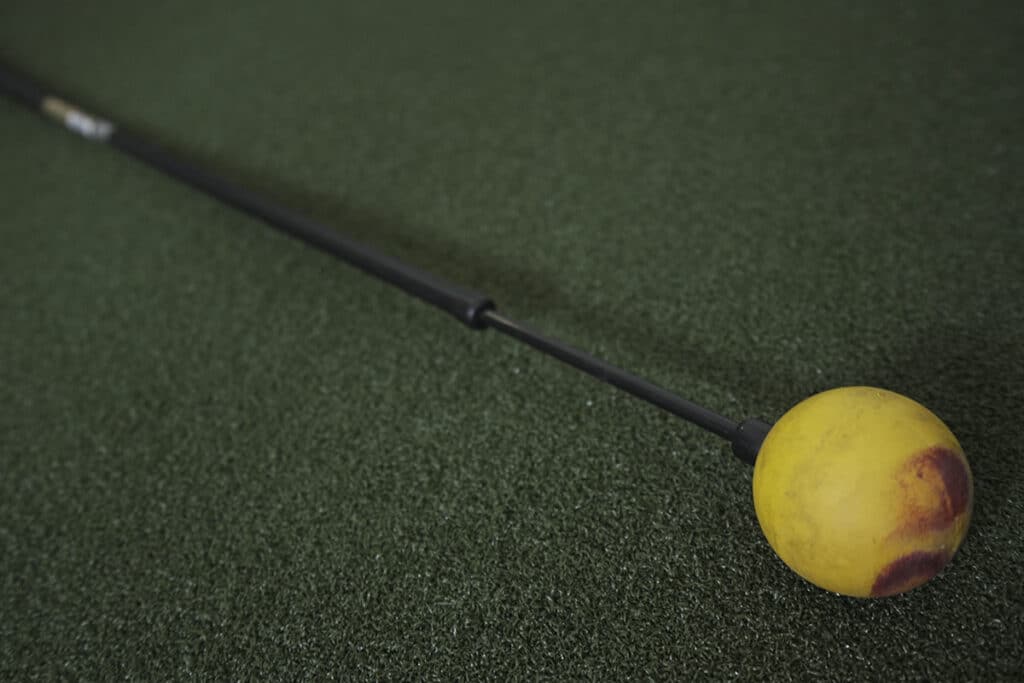
The Orange Whip has been around for years, but is still one of the best tempo trainers on the market. Like The Lag Shot, the whippy shaft — this time with a weighted orange ball on the end rather than a club you can hit balls with — will help you feel the correct way to swing a golf club and is also great for warming up and grooving your swing before a round.
Available from: Orange Whip Golf (save 10% with discount code golferlogic)
3. The Stack System
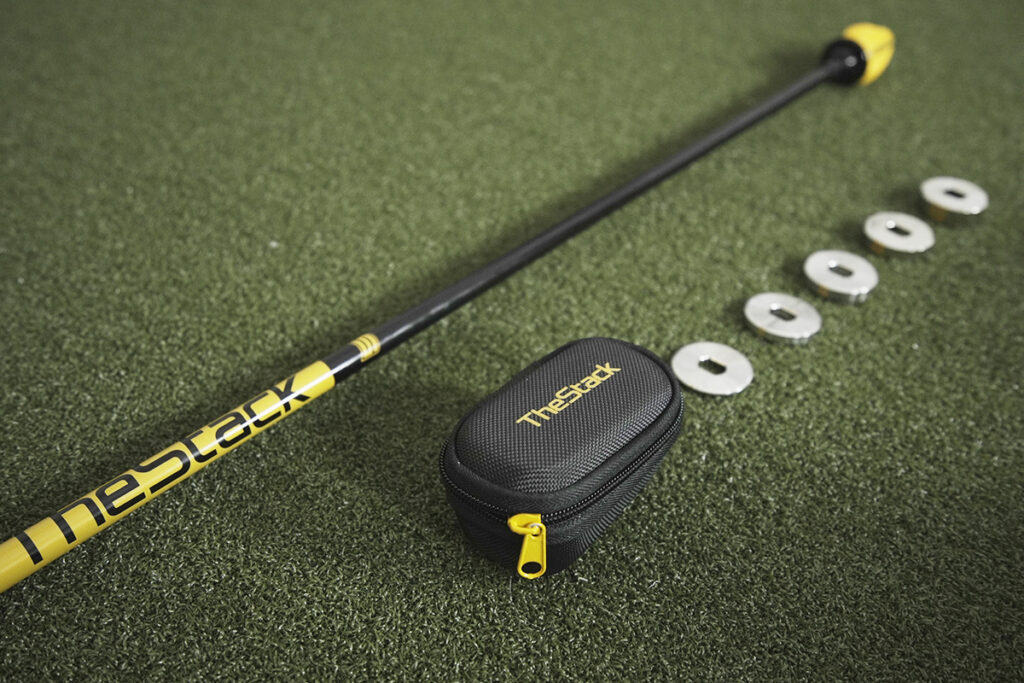
The Stack System is our number 1 pick for improving your swing speed. Using the app for guidance and monitoring progress, you’ll work through a progressive overspeed training and strengthening program, which will add speed and distance over time. The app + the interchangeable weights make The Stack System our top swing speed trainer pick over SuperSpeed, although it is more expensive.
Available from: The Stack System (save 10% with code golferlogic)
4. SuperSpeed
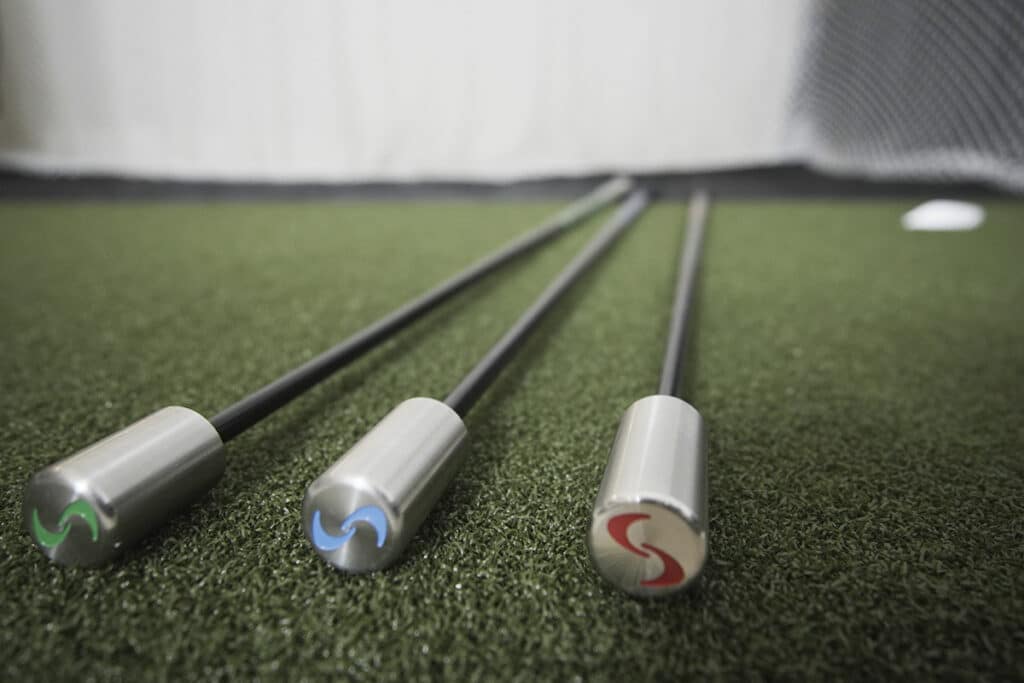
While we prefer the flexibility of The Stack System, SuperSpeed is the original overspeed training system, and has been trusted by thousands of golfers (including hundreds of PGA Tour pros) to improve their swing speed. Like the Orange Whip, it’s been around for a while, but still does the trick.
Available from: Amazon
5. HackMotion Swing Analyzer
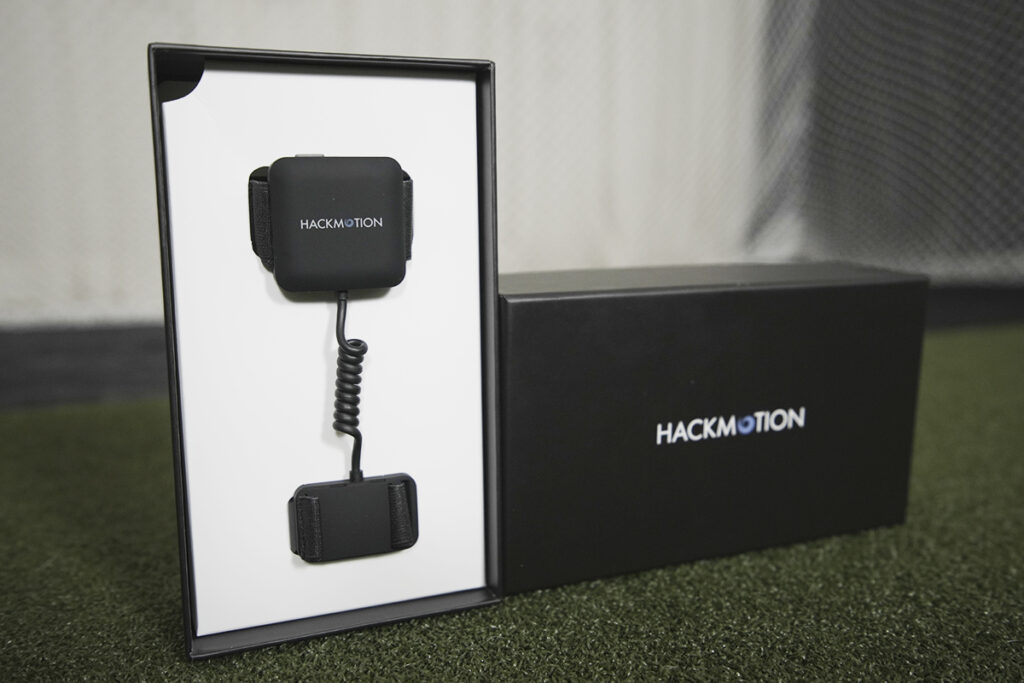
The HackMotion Swing Analyzer straps on to your wrist and analyzes your wrist conditions at all points in your swing, with real time visual and audio feedback via the app. A great high-tech choice for slicers who struggle with an open clubface at impact.
Available from: HackMotion (save 5% with code golferlogic)
6. The GEM
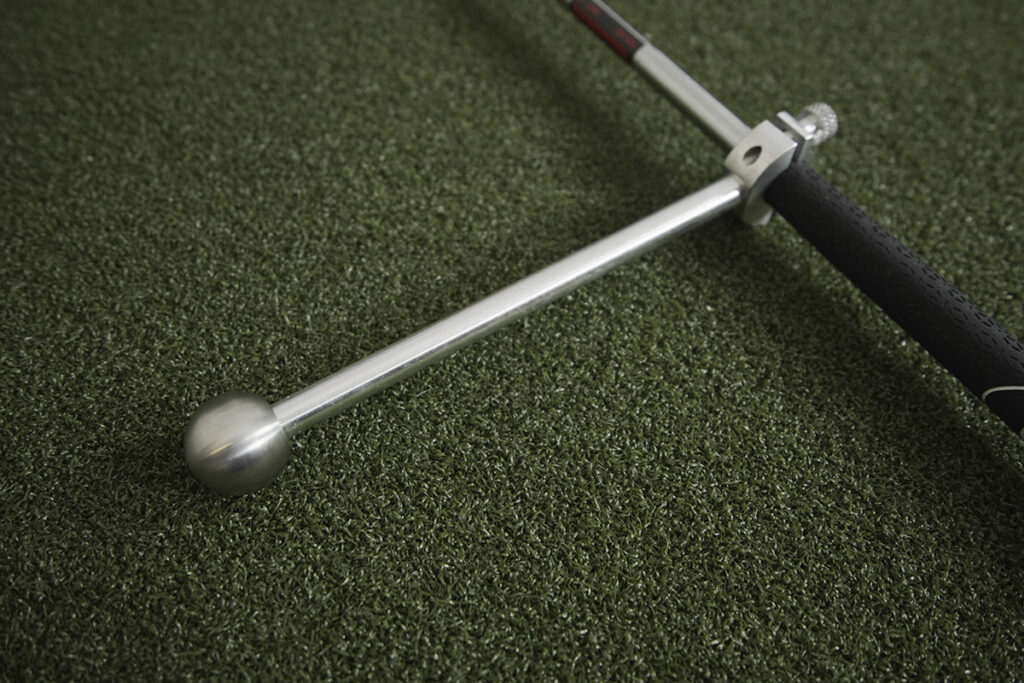
For those who prefer a practical, rather than tech based training aid for fixing their slice, the GEM is a solid choice. The GEM fits onto your club and forces you to release the club correctly (on the proper path) to avoid a ‘wobble’ through the hitting zone.
Available from: GEM Golf (save 10% with code GOLFERLOGIC)
7. Me and My Golf’s True Grip Glove
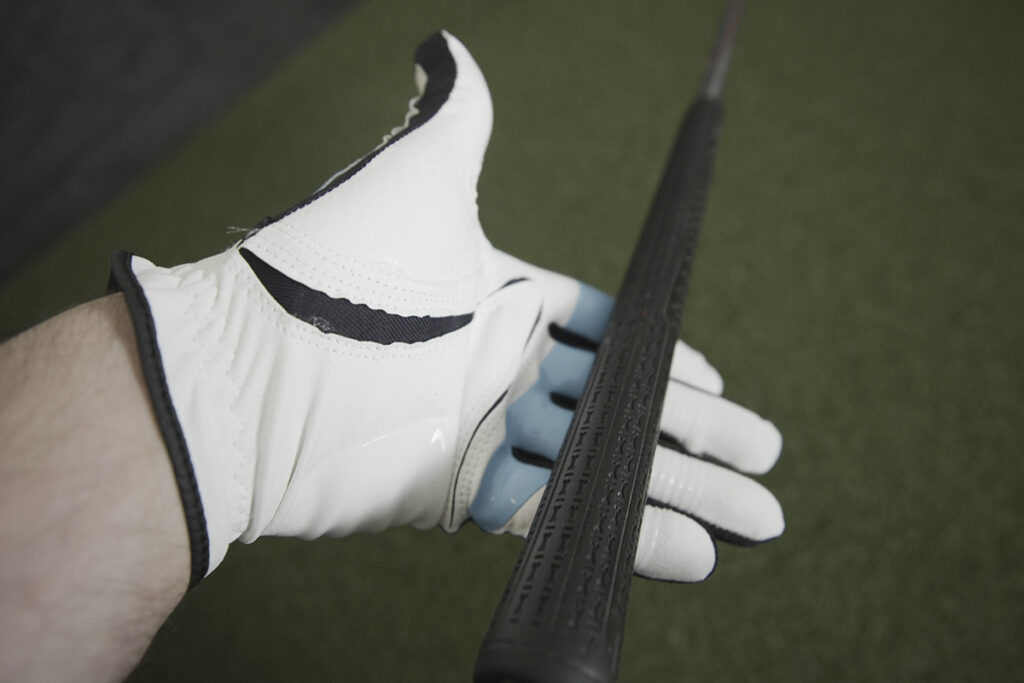
The cheapest (and perhaps simplest) training aid on our list is this tournament legal grip training glove from Me and My Golf. A good grip can fix a lot of problems in your swing, and the True Grip will show you exactly where to grip the club across the fingers of your lead hand and where to position it on the club (it promotes a strong grip).
Available from: Amazon
8. Me and My Golf Home Training Net
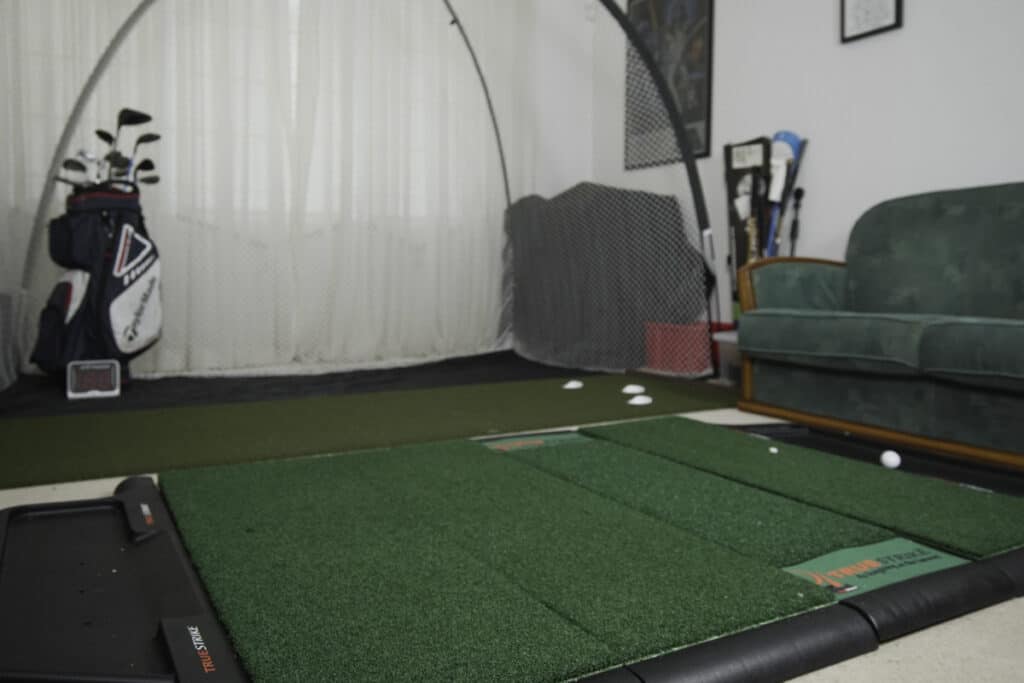
An affordable net for home practice, that’s quick to assemble (although you’ll need a bit of room to do it) and large enough to catch errant balls. Includes a target sheet for chipping practice.
Available from: Amazon
9. TrueStrike Hitting Mat
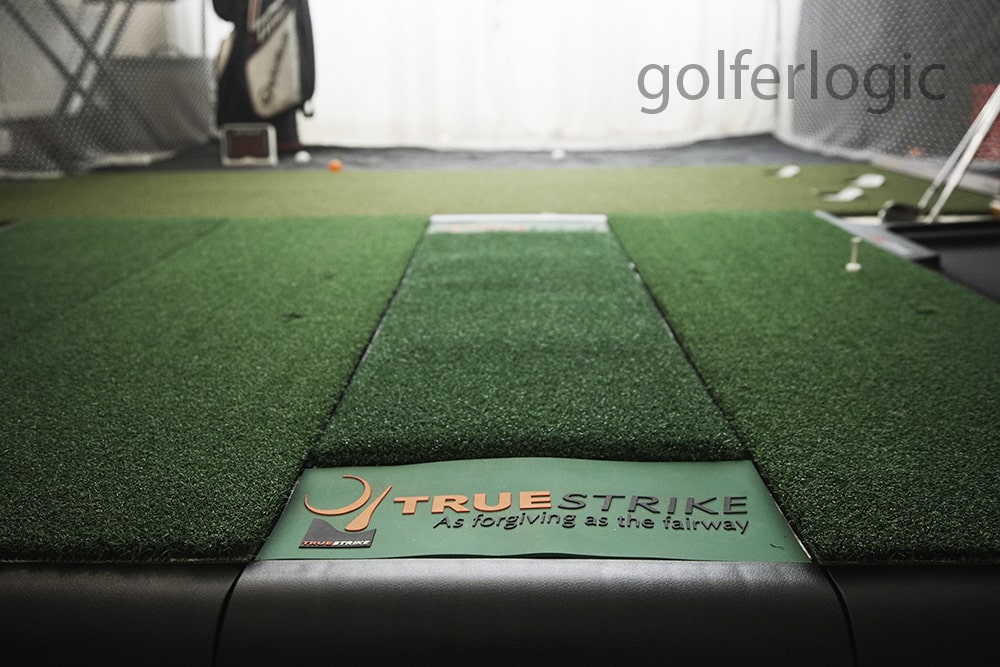
While we opted for an affordable hitting net, we feel it’s worth spending money on a high quality hitting mat. Not only will you get an impact that better reflects the real thing (properly punishing mishits), the fairway like give in premium mats will also protect your wrists from injury. The TrueStrike mat (available in various size combinations) continues to be the best on the market.
Available from: Carl’s Place
10. FlightScope Mevo+ 2023

FlightScope’s Mevo+ 2023 edition is our pick for the best launch monitor this year. While it’s not exactly cheap, it hits the right balance between affordability and accuracy. We should point out that the Mevo+ is a radar based launch monitor, so for home use, you’ll need a room that’s at least 16ft long (6-7 ft behind the ball, 8-10 ft of ball flight). For smaller rooms we’d go for the SkyTrak+.
Available from: FlightScope (save 5% with code golferlogic10)
Which golf training aid is right for you?
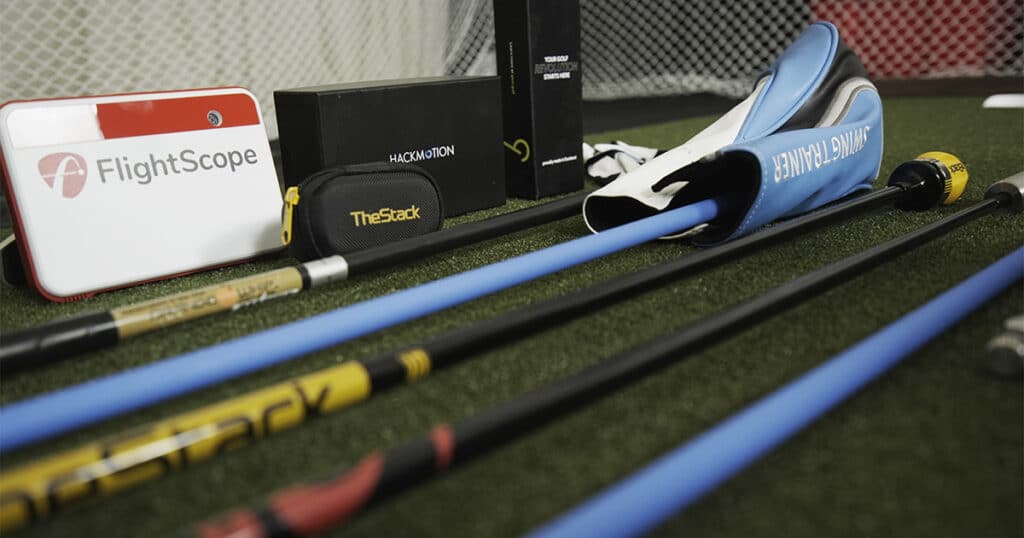
What’s the best golf training aid right now?
It depends.
Because the ideal training aid for you is going to depend on what you’re looking to improve in your game. What are your faults? What are your goals?
For most golfers the answer to the second question is going to be one of three things:
- More distance
- More speed (linked, but not exactly the same, since strike is also a factor in distance)
- More accuracy (often involving fixing a slice)
And some of the top training aids are designed specifically to help with the above goals. It’s clear that something like The SuperSpeed system is all about speed (the clue is in the name).
But some of the connections are a little looser.
For example, we class the Lag Shot as primarily a tempo trainer. But a golf swing with good tempo/rhythm is probably going to get faster over time. So the Lag Shot is going to help you with speed, but we wouldn’t classify it as a swing speed trainer.
Lines get blurred. And it’s hard to know where to put your cash to get the best results for your game.
The good news is we’re in the fortunate position that we get to try out most of the golf training aids on the market. We literally get a package most weeks with some new innovation, and we’ve got a space set up for testing them out that looks like this:
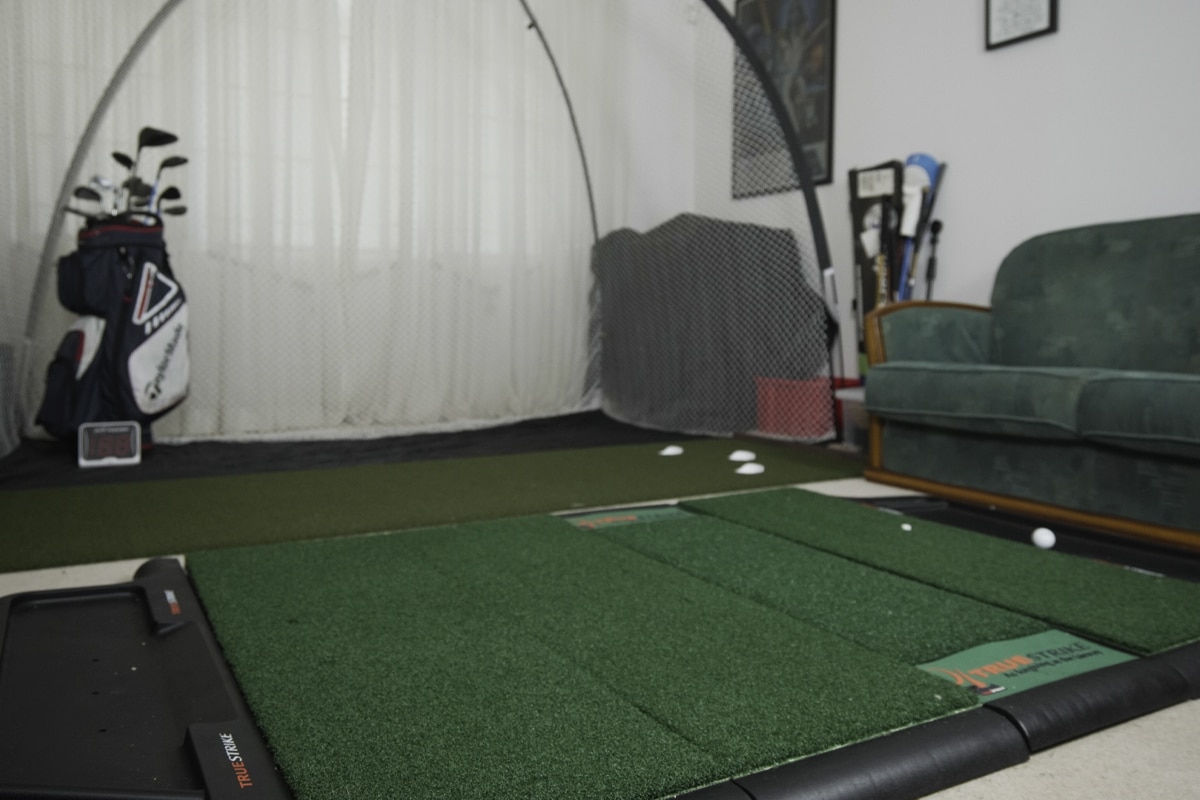
If something doesn’t work, if it’s a gimmick, we reject it.
And between our editorial team (and a few buddies we rope in now and again) we’ve got most of the swing faults going. We’re not pros. We’re average golfers who love the game and want to get better year-after-year.
So we’re confident that by reading on you’ll be able to make a decision on which golf training aid (or aids depending on your budget) is going to be the right fit for your personal golf goals.
There are no quick fixes in golf. But every training aid listed in this guide can help your game if you use it correctly.
We’ll start with a summary of our top picks, then dig into a bit more detail about why we picked them.
Training aids for improving your rhythm and tempo
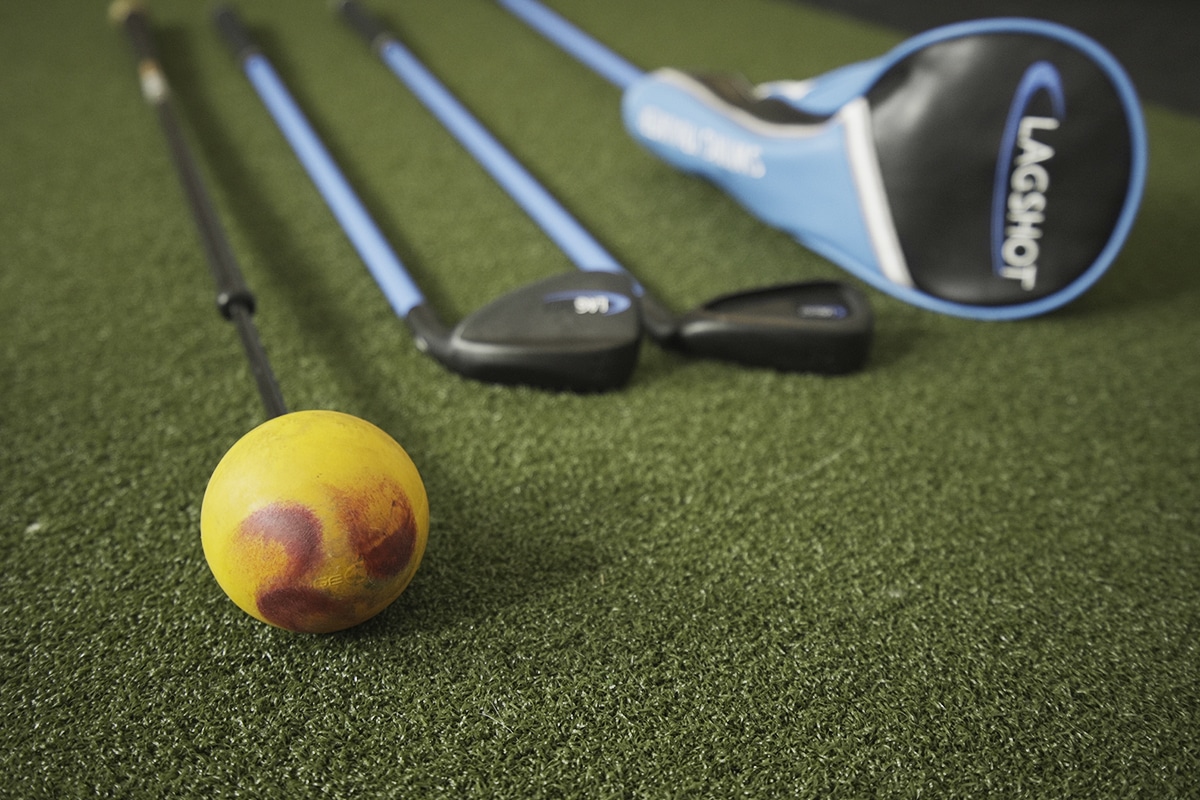
If you’re looking to improve your overall swing, then tempo trainers are a good place to start. It’s not a panacea, but getting a feel for good rhythm and timing in your swing is definitely going to get you on the right track.
There are a load of these around. The O.G. is the Orange Whip, which is basically a weighted orange ball on the end of a flexible shaft. Get your timing wrong and you’ll slam that orange ball into the ground. This teaches you patience in transition, and lets you “feel” the golf swing. Simple yet effective.
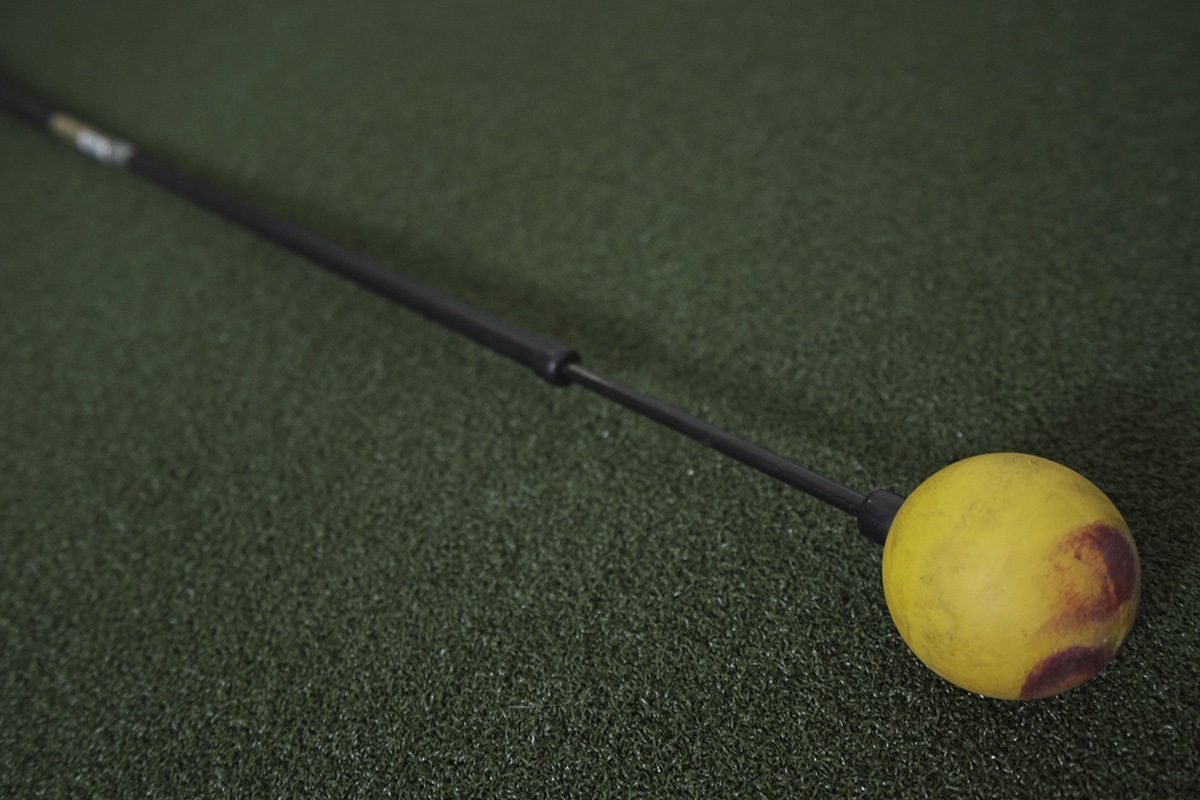
We then have a million and one Orange Whip knock offs, which mainly try to get round patent issues by changing the color of the weighted ball. We’ve seen blue whips, yellow whips… even a purple whip. And while they may be slightly cheaper, we’d stick with the real thing.
But while the Orange Whip is great for tempo it does have one major issue. You don’t actually hit balls with it. So you’re not learning to control the club face while improving your timing.
Fortunately there’s another tempo trainer that lets you do just that: The Lag Shot.
It’s got a similar flexible shaft, but instead of an orange (or other colored) ball on the end has an actual clubhead. Get your timing wrong with The Lag Shot and instead of slamming the ball into the ground like the Orange Whip, you’ll just mishit an actual golf ball.
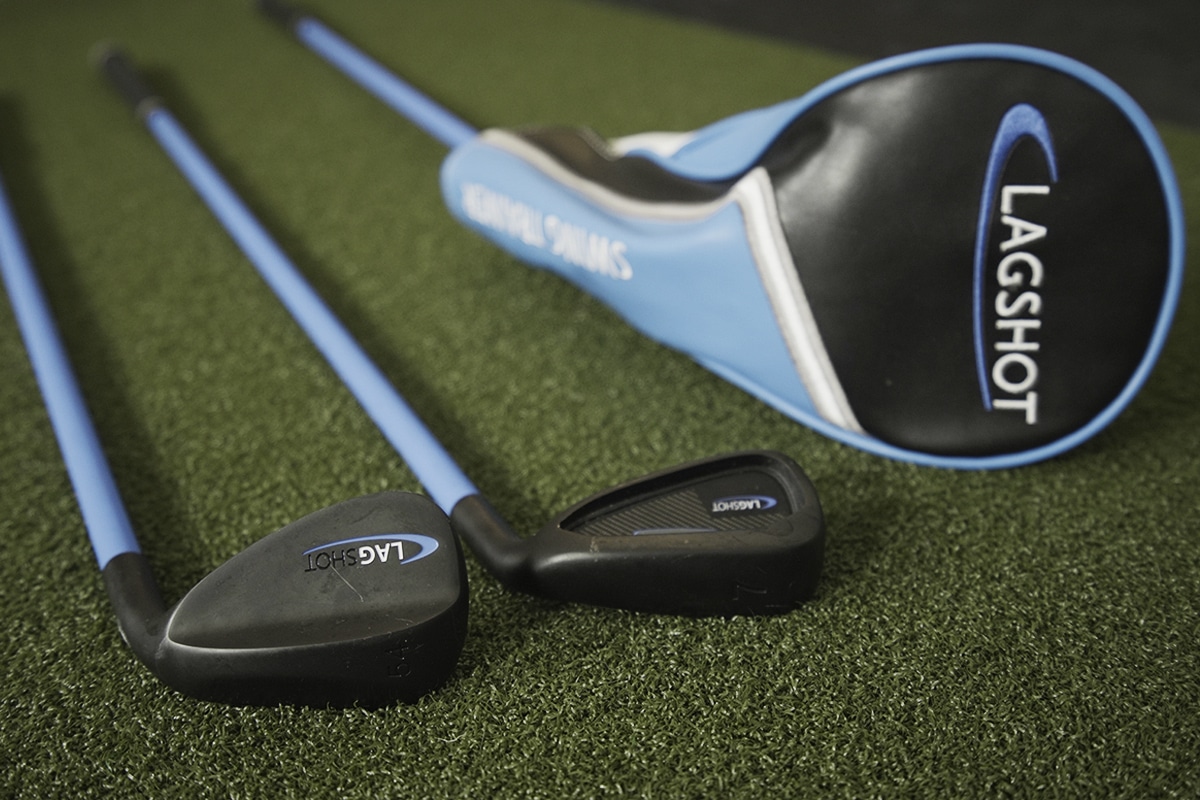
I’ve had an Orange Whip for over 6 years and still use it for warming up before a round. It’s great for loosening up (particularly if you have back issues like me), and is also useful for ‘slowing me down’ before the first tee. With adrenaline pumping I can tend to get a little quick on that first drive, which never leads to good things. And by ‘quick’ here I mean rushing transition, not overall swing speed. Overall speed is a good thing, bad timing/tempo is not.
But in my off-course training I’ve pretty much fully switched over to the Lag Shot now. There’s no getting away from the fact that actually hitting balls with it gives it the advantage, and the ‘feel’ of the swing is similar to the Orange Whip.
There’s a place for both of these tempo trainers. And they will both help your overall golf swing. I still use them both in my training (although the Orange Whip’s role has changed). But the Lag Shot is our number one pick right now.
- Top pick: The Lag Shot (save 20% with discount code golferlogic)
- Runner up: The Orange Whip (save 10% with discount code golferlogic)
Training aids for increasing your swing speed
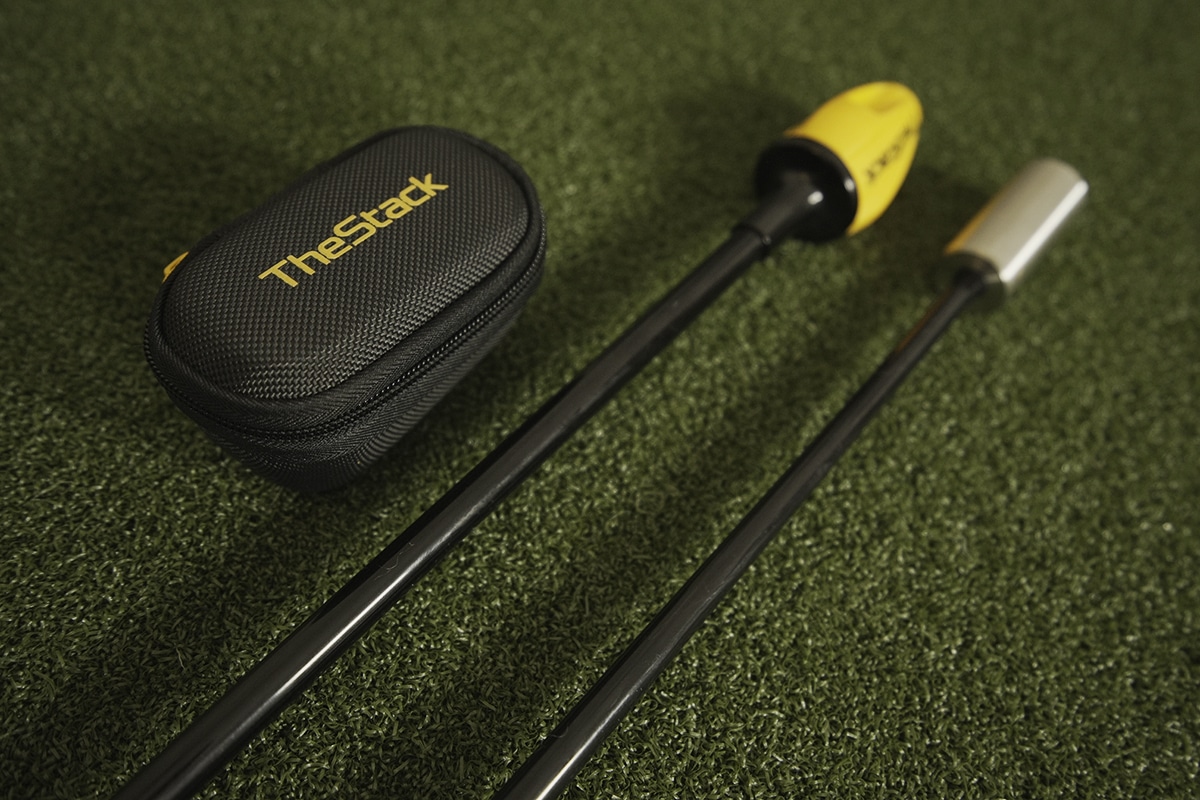
We all want more speed. And as I mentioned above, speed in your swing (the right kind of speed) is always a good thing. If your playing partner tells you to slow down your swing, tell him to give the same advice to any tour player and see what their reaction is.
The bottom line is improving your distance correlates with lowering your scores. And more distance comes from more speed. Yes, quality of strike is also important, but speed is the real key to unlocking those booming drives.
So what’s the best way to improve your speed?
It’s pretty accepted by now that progressive overspeed training is the way to go. Swing faster by… well, swinging faster. Start with swinging speed sticks that are lighter than your driver, get your body used to speed, and work your way up to sticks that are heavier than your driver (so your driver ends up feeling light).
SuperSpeed is the go-to name here. They’ve been around for a while and their training aids (which are basically 4 weighted sticks that get progressively heavier) have been trusted by hundreds of tour pros to help them improve their speed and distance.
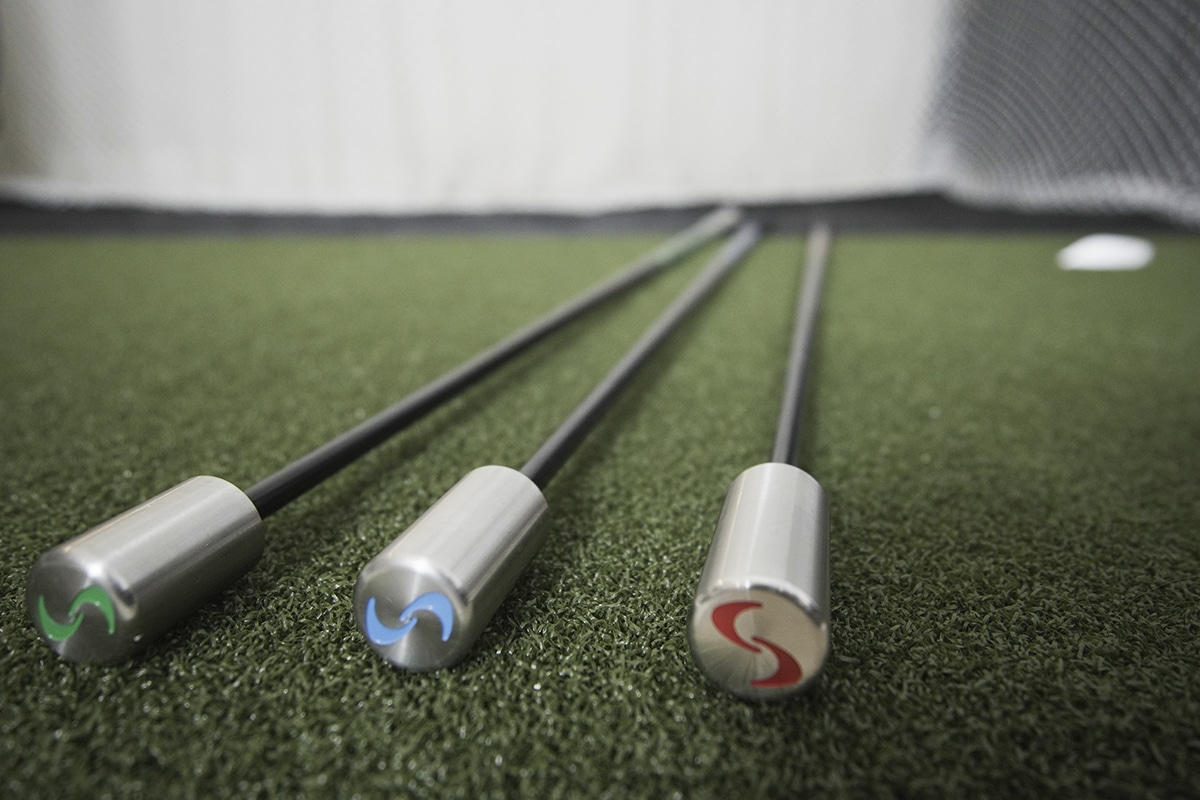
But are they still the best in the business?
Kind of. I’ve owned a set of SuperSpeed since early 2020, and when I worked through the program during the pandemic (there wasn’t much else to do) I saw some solid improvement to my distance and speed. They worked well then, and they’re still going to work well today when combined with SuperSpeed’s training program.
But like the Orange Whip, SuperSpeed’s success inspired a load of copycat speed training aids – some exactly the same with different branding, others with a slight twist.
We’ve ignored most of them. But we will say that The Stack System is perhaps a worthy SuperSpeed successor, and it’s the one I personally use in my speed training right now.
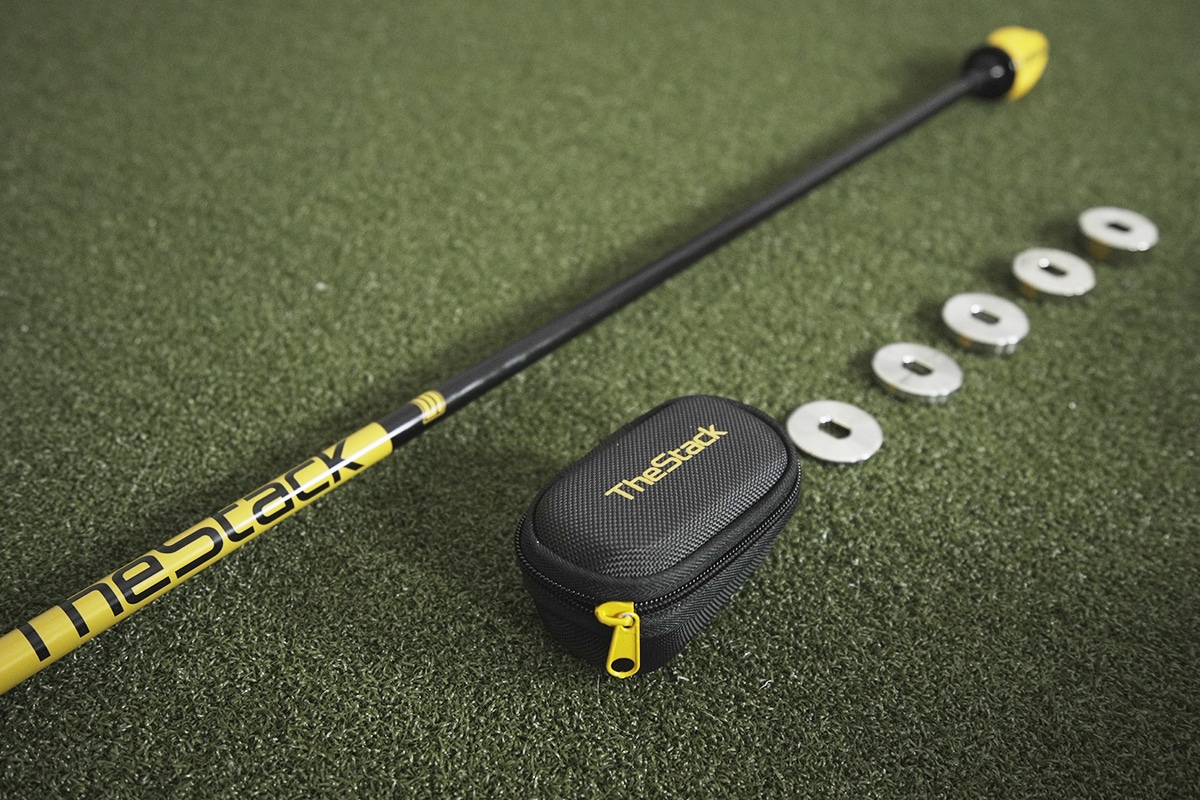
Unlike SuperSpeed (where you have 4 separate sticks) you’ll just get one with The Stack System, which you can add/remove weight to as you work your way through their program.
Is it better? The adjustable weight system certainly makes it more flexible, allowing you to choose an exact weight that’s right for you.
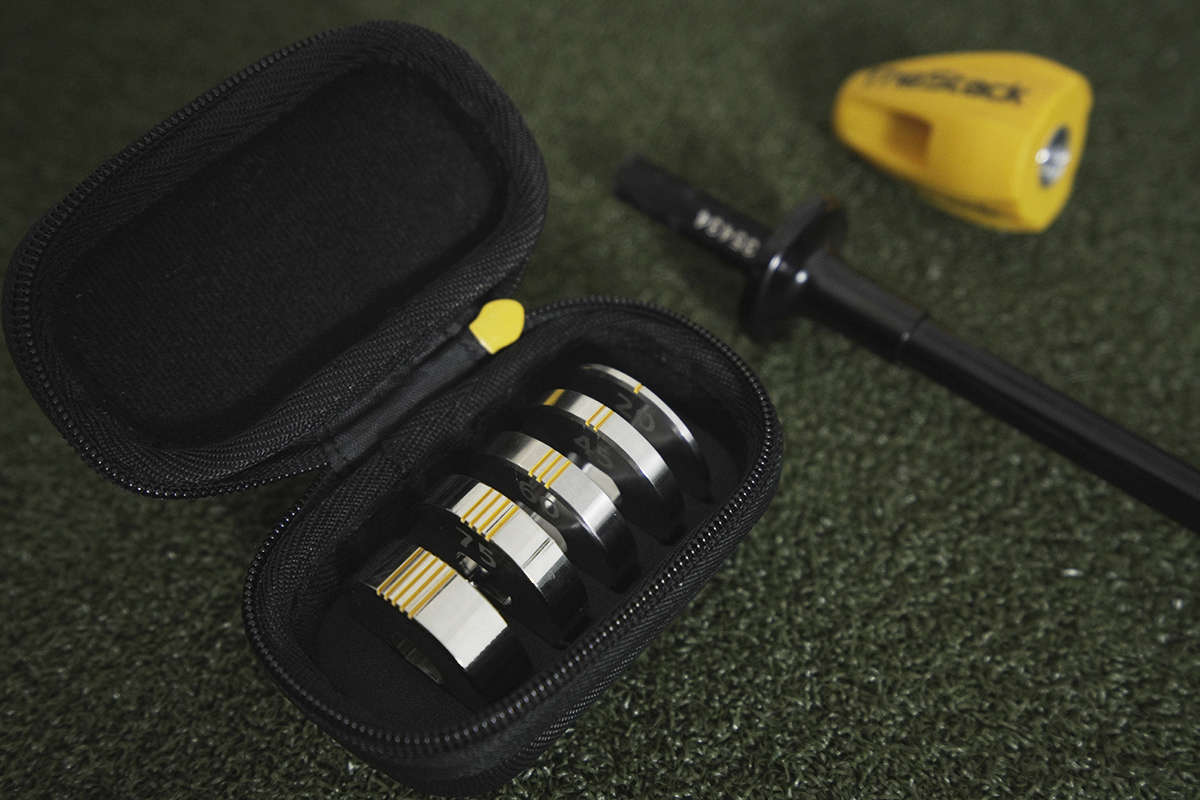
It also feels a bit more polished than SuperSpeed (both the product and the training), but we should point out that it’s also more expensive.
We’re giving The Stack System the top spot here, but you can’t really go wrong with SuperSpeed.
- Top pick: The Stack System (save 10% with code golferlogic)
- Runner up: SuperSpeed (Amazon)
Training aids for fixing your slice
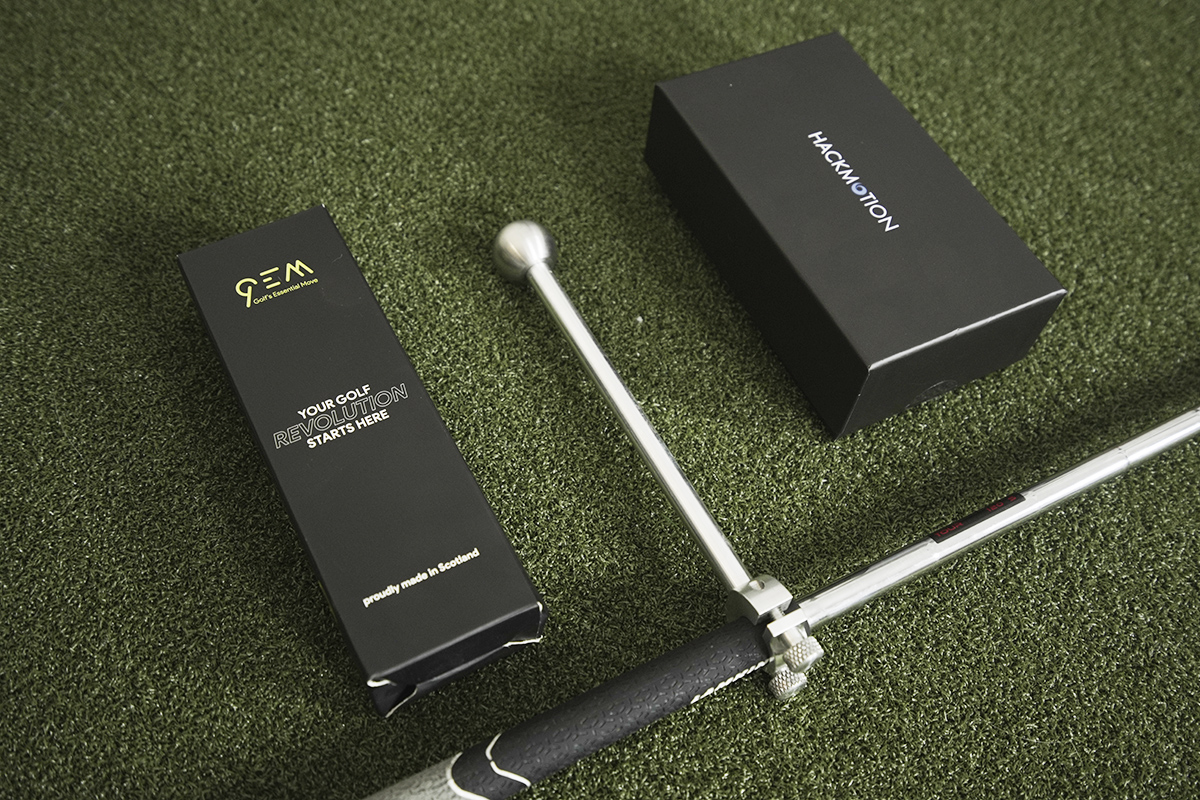
There’s no big mystery to slicing. It’s caused by a clubface that’s open to your swing path at impact. Swing path to the left with club face open to the path, you’ll hit a pull slice (possibly playable). Swing path to the right with club face open to the path you’ll hit a push slice (pretty much always unplayable).
The more open the clubface is to the path, the more it’s going to curve/slice.
And we stress path because it’s path that matters, not the target line. To hit a push draw, you actually want a clubface that’s slightly open at impact (with regards to the target line), but closed to the path (i.e. pointing less right for a righty than your swing path is going).
If you have a swing path going left and you work on closing the clubface, you’re going to end up hitting pull hooks. And trust me, they’re not fun.
We have more info on fixing your slice here. But the bottom line is you want to work on controlling your clubface. And since your hands are what connects you to your club, that pretty much means working on your wrist conditions.
So to fix your slice (or at least tame it/turn it into a fade) you’ll want to go for a training aid that’s designed to work on your wrist conditions throughout the swing.
And for that purpose, the HackMotion swing analyzer is in a league of its own.
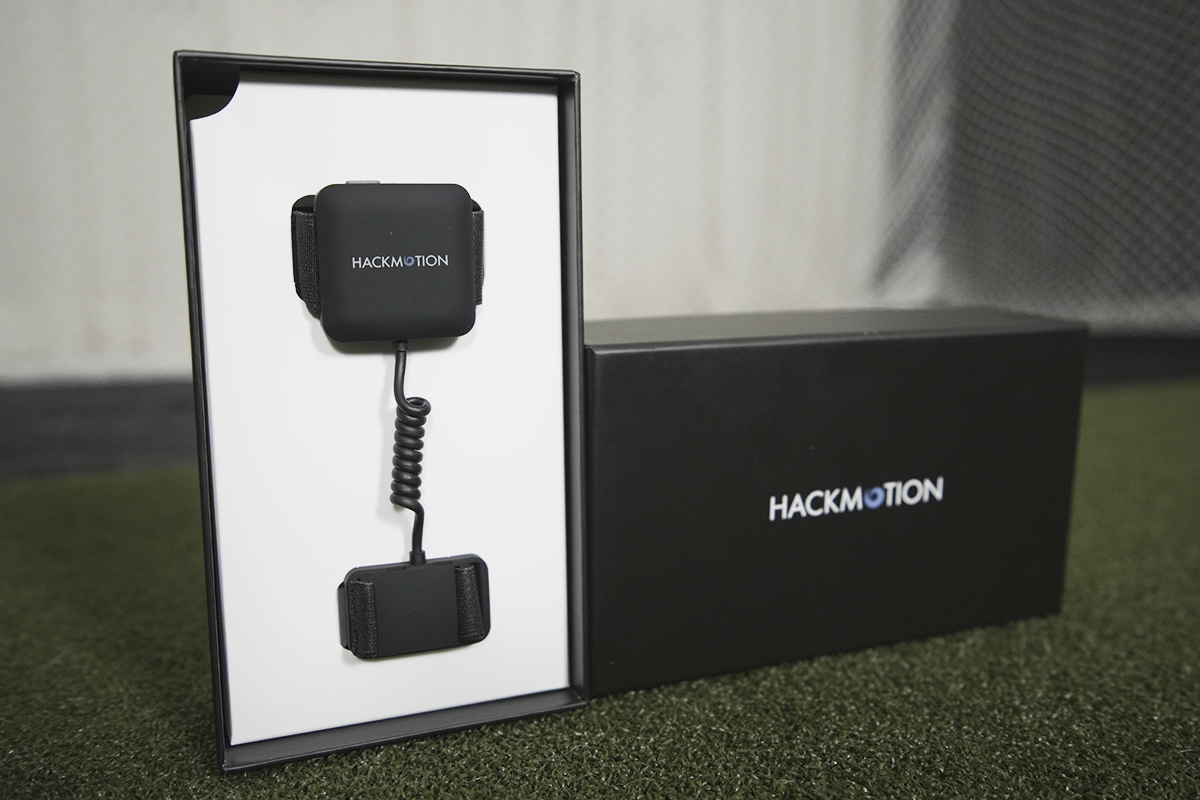
Strap on the HackMotion, calibrate it, and you’ll get real time feedback via the app (and audio feedback) on exactly what your wrists are doing at every point in your swing. And of course advice on how to adjust your wrist positions to fix your faults.
I’ve personally found the HackMotion most helpful for my transition, where I can have a tendency to drag the handle and end up steep. The pursuit of ‘lag’ (and holding on to it) due to poor instruction and misinterpretation of static positions when reviewed on video over the years has a lot to answer for.
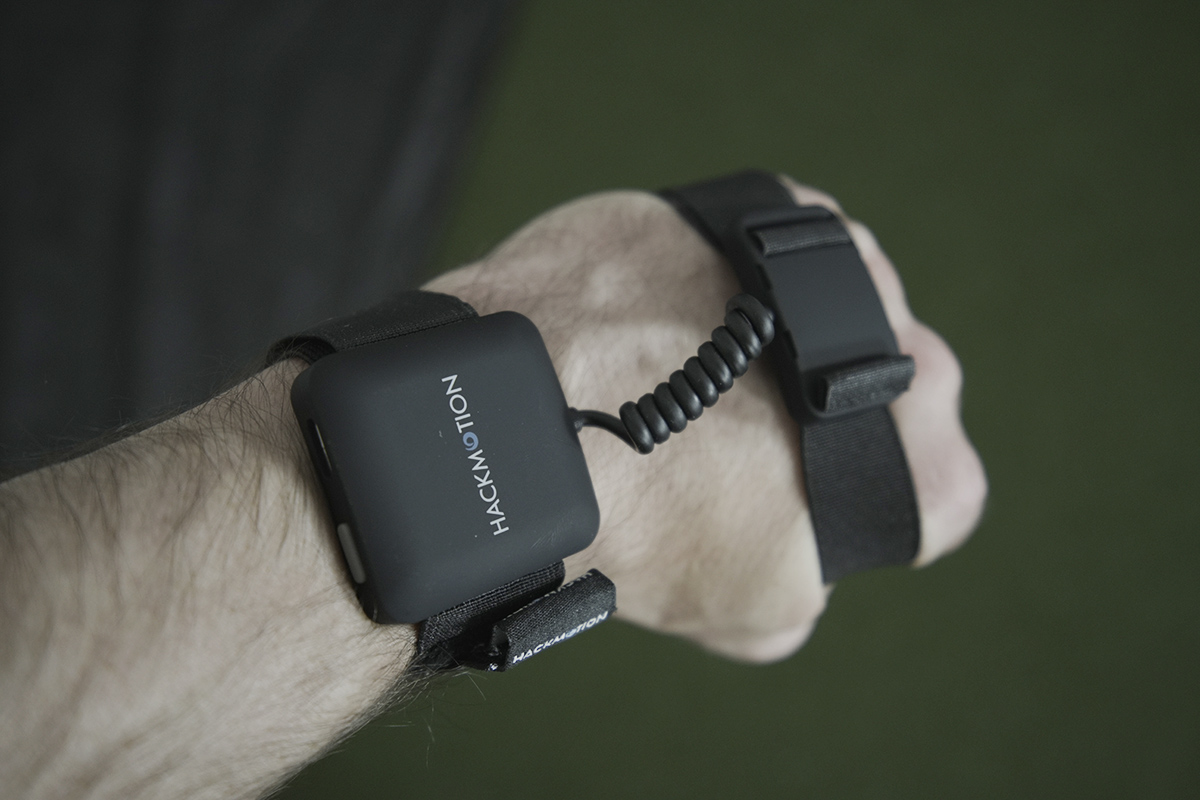
So I’m currently combining the HackMotion’s feedback with some of Monte’s swing thoughts (the cast part of ‘no turn, cast’) and the refreshing approach to the golf swing of Marcus Edblad. Check out his ‘Circle Of Speed’ video if you haven’t come across him before.
But if you’re a slicer (I’m not, my miss is a hook), then getting your wrist into a better position at the top of your swing and of course at impact will probably be your priorities. Although with that being said, no part of the golf swing works in isolation, and the whole thing is a chain reaction so really, you want to get your wrists doing the right thing at all points.
It’s not cheap. But the HackMotion is undoubtedly the best training aid for wrist positions (and fixing your slice) that there is.
Our other, more affordable pick for slicers is The Gem. Unlike the HackMotion (which is all about tech) The GEM is a fully practical training aid.
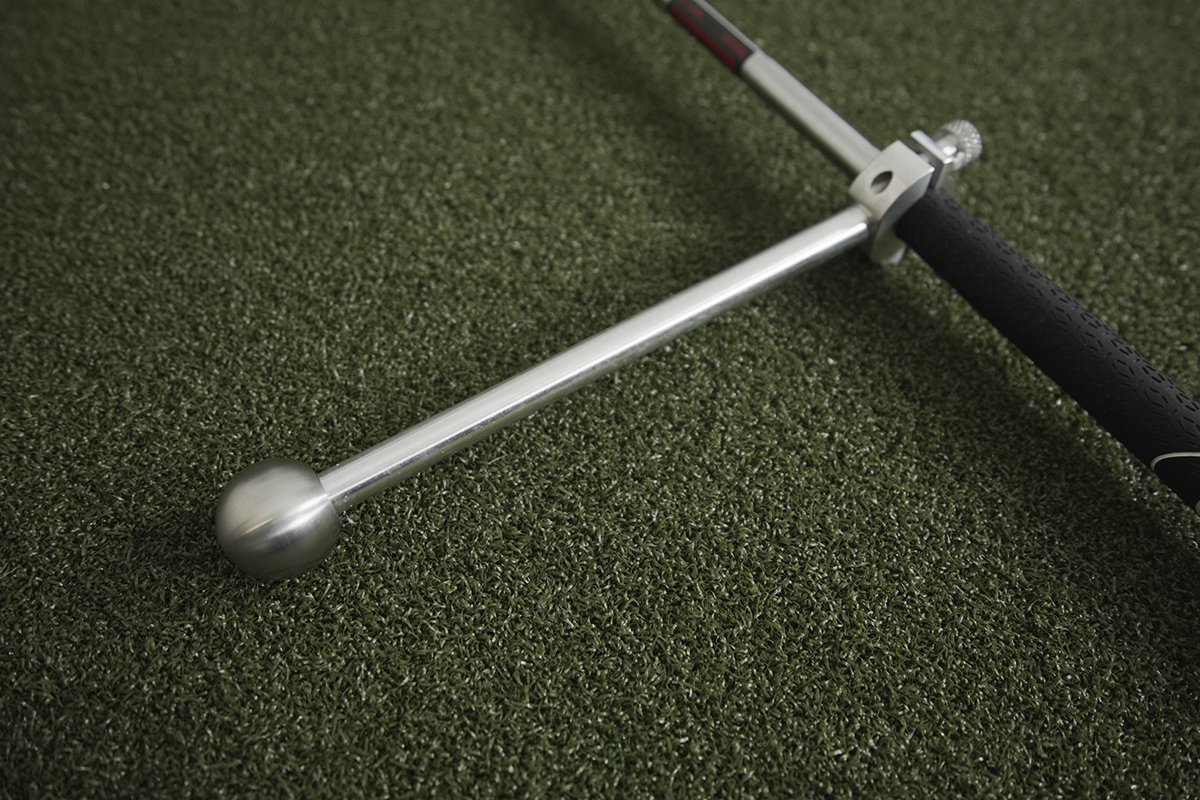
It’s not much to look at, but it really does work. Although only if you use it correctly.
I’ll be honest. When I first got my hands on it I was over-eager, pulled it out the box, attached it to my 7 iron with the long rod, and started swinging away. It was wobbling all over the place. I figured I knew what it was supposed to be doing (educating my hands) but I was wrong.
Because it’s not just about your hands, you have to get your body moving correctly (opening up) to keep the weight in-line with the shaft. Otherwise, you get the wobble, which really is instant feedback that you’re not swinging correctly.
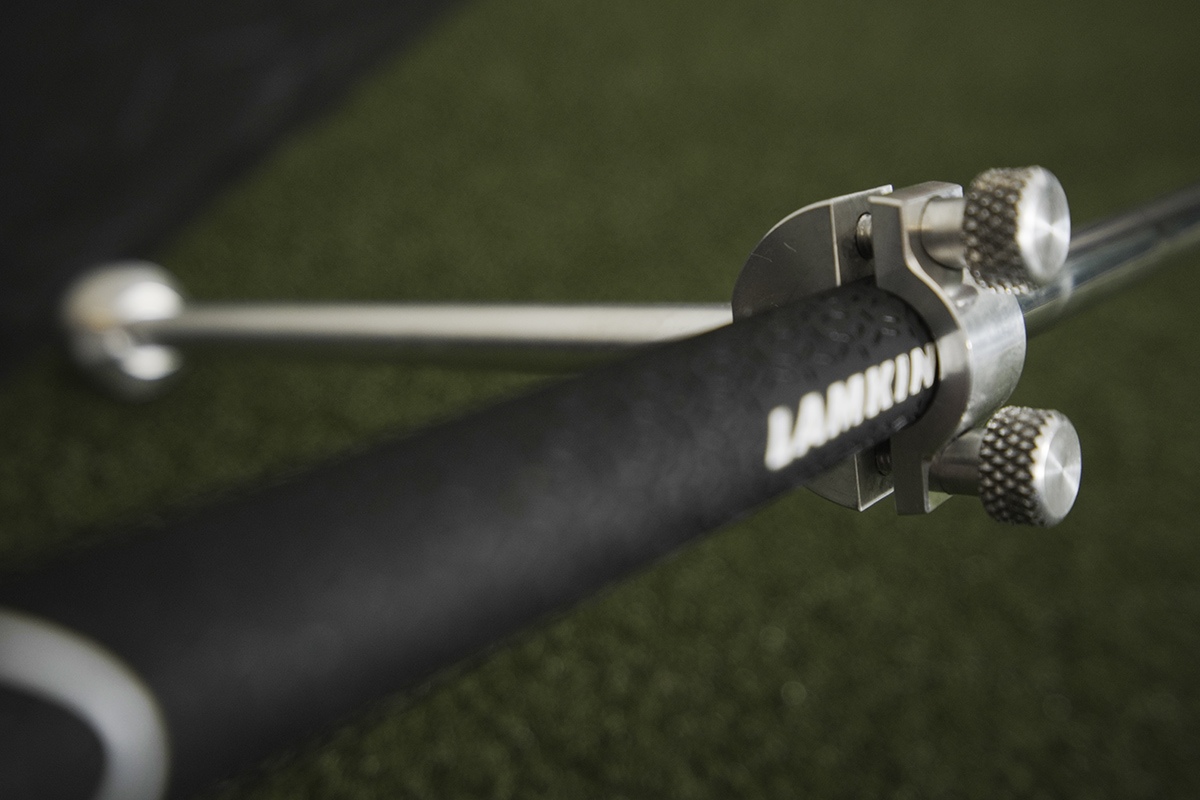
When I watched some of the training videos and started using it correctly I immediately had a different feel to my swing and the wobble was gone.
As I mentioned, I’m not a slicer. But after swinging with The GEM I could feel a different position at the top. The club face felt more open to me, but when I checked on video it was actually square to my swing plane when I was previously shut. So while it’s mainly promoted to slicers due to the assistance with release, I’m pretty sure the backswing element is going to help with my hook.
The GEM is a truly innovative device that will help you feel the correct way to swing (with a full body release), and instant feedback (the wobble) when you’re doing it wrong.
- Top pick: Hack Motion (save 5% with code golferlogic)
- Runner up: The GEM (save 10% with discount code GOLFERLOGIC)
Training aids for improving your grip
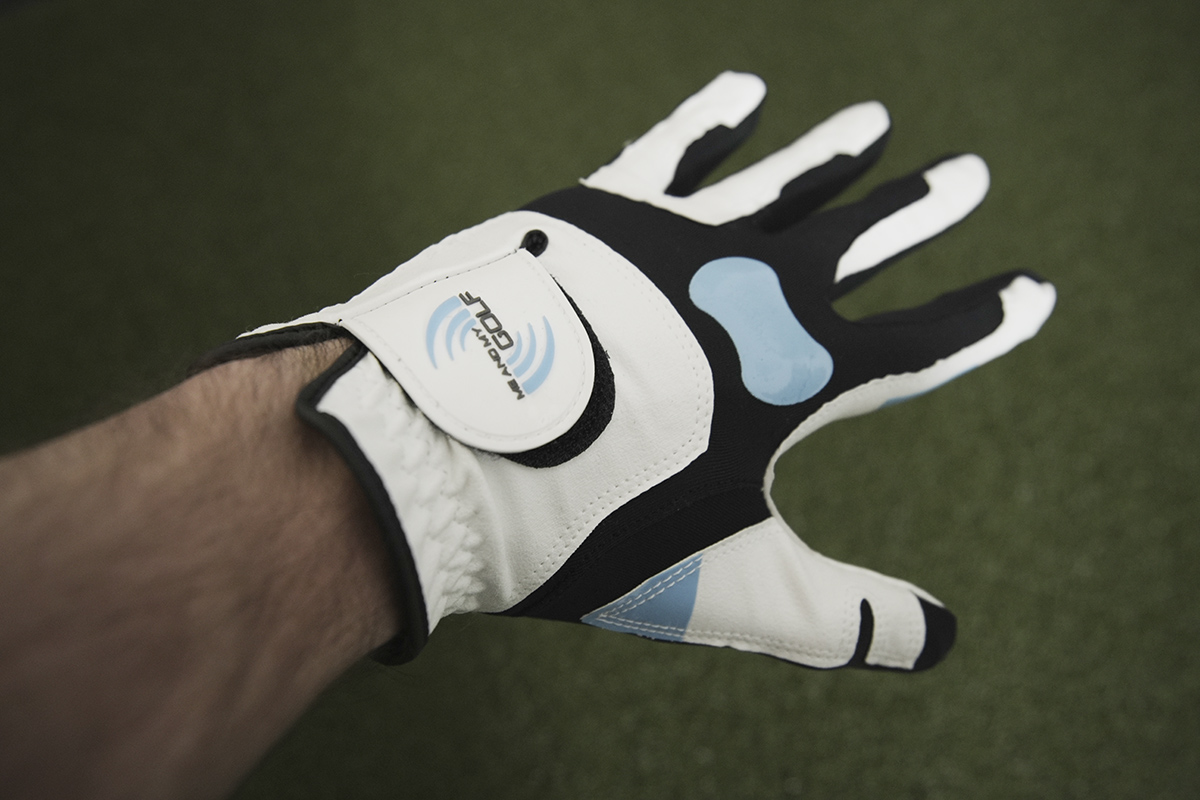
Is grip a golf fundamental? Depends who you ask. We say, not really since there are so many variations, most of which you’ll see on the tour.
But there’s definitely a “preferred” grip that most amateur golfers (particularly slicers) would benefit from at least trying. It doesn’t concern itself too much with whether you interlock your fingers, overlap them, or go for a 10 finger grip. That’s going to be down to preference (I’m an interlocker).
Instead, the ‘fundamentals’ of a good grip would be:
- Gripping the club more in the fingers of the left hand (not the palm)
- Showing 2 knuckles at address (a strong grip)
- Pointing the ‘V’ at the right shoulder (again, promotes strong grip)
And it’s those three keys that Me and My Golf’s ‘True Grip’ glove focuses on.
Take your grip and lay the club handle along the blue silicone section, which will get you holding the club in your fingers.
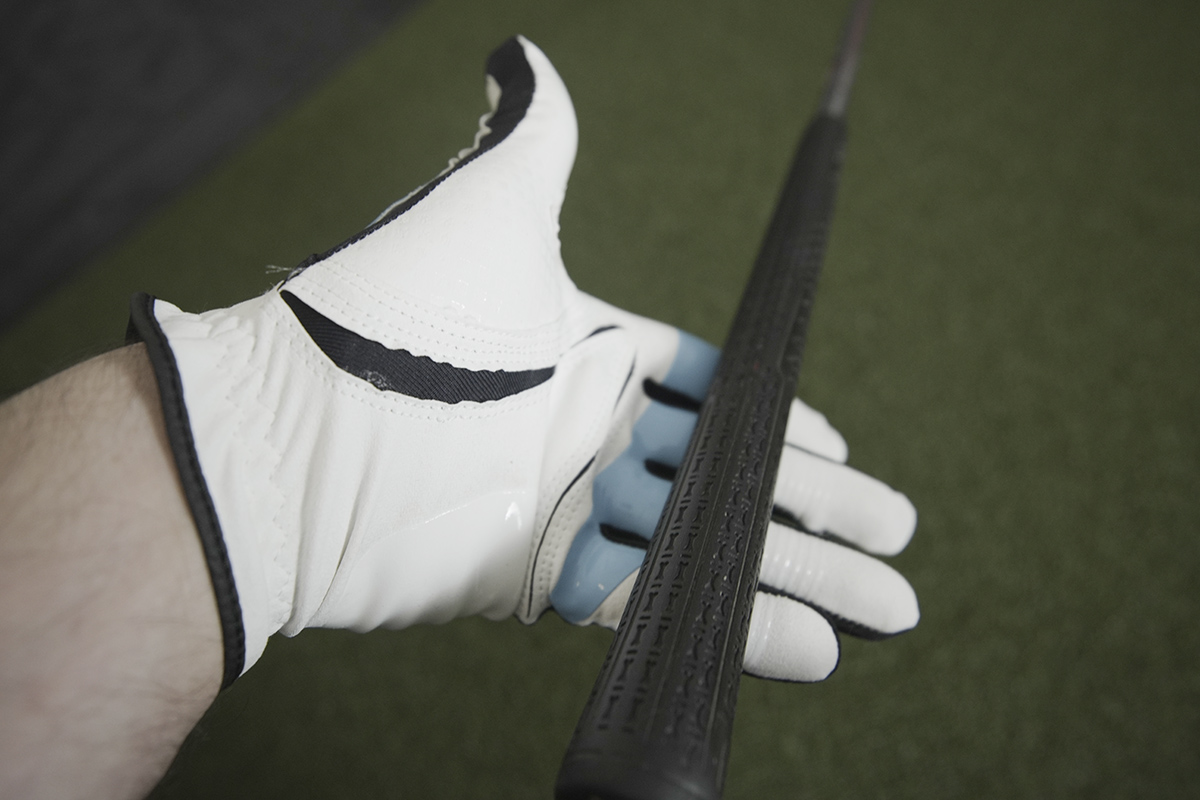
Then, for a strong grip, make sure you can see the blue silicone section over the knuckles. And finally, check that the blue V is pointing to your right shoulder.
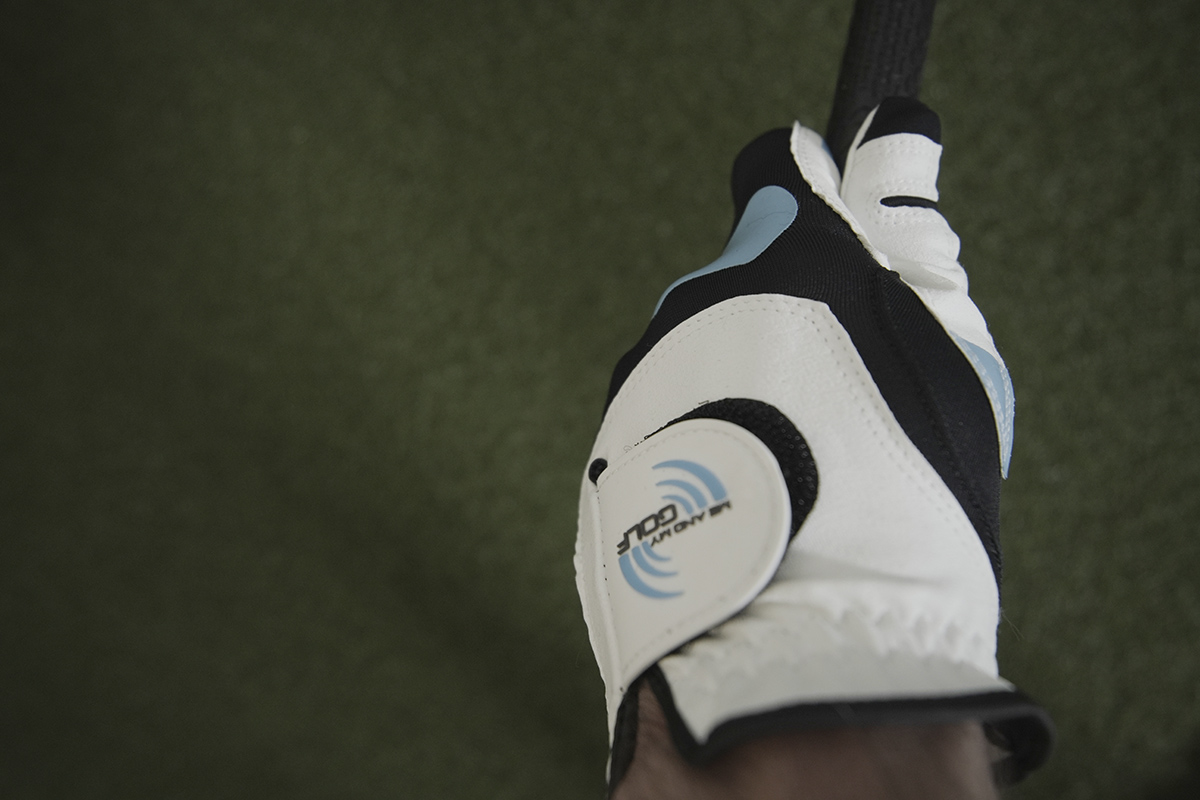
Not exactly revolutionary, but the visual aids really do help.
Of course, the simplicity of it means that you could simply draw some lines on to your regular glove with a pen if you want. But Me and My Golf’s True Grip isn’t much more expensive than a regular glove. And it’s also in itself an excellent glove with great grip that fully conforms to the rules of golf, i.e. you can wear it on the course.
Your other option is a grip trainer that slips over the end of your club. Just pop your fingers into the slots to groove the correct grip. I used one a few years ago, which is buried somewhere in my shed (hence the generic picture), and it does the trick – you have no option but to grip the club correctly. We should point out that unlike the True Grip glove, slip on grip trainers are not legal for tournament play.
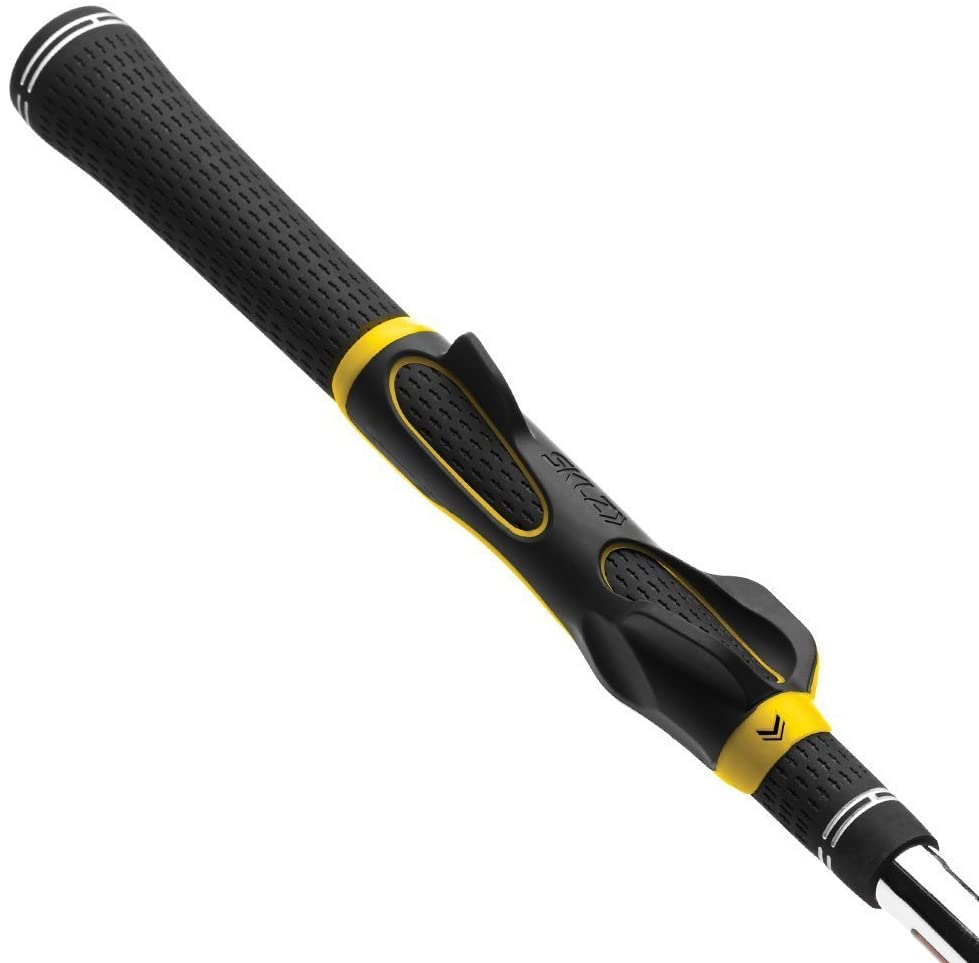
- Top pick: Me and My Golf’s True Grip glove (Amazon)
- Runner up: Grip trainer (Amazon)
Training aids for indoor practice
Finally, here are three essential training aids for sharpening up your game indoors (or in your backyard).
They’re not really going to be a big surprise. To practice golf indoors you’re going to need a net, a hitting mat, and ideally a launch monitor.
We’re not going to be particularly dogmatic in terms of which particular products you go for, as your choice is going to be dictated somewhat by budget.
For example, you can easily spend $2K on a net, but do you need to? Well, in our current testing setup we use Me and My Golf’s practice net (under $200), and we’ve smashed many drives into it with no issues whatsoever.

But for a bigger breakdown on golf nets see our guide here.
Mat wise, we do think it’s worth spending a bit more, and personally I swear by TrueStrike. I hate mats where the club skips along the surface (most driving ranges) as they kill my wrists and when I go to the course I end up hitting everything thin since I’ve trained myself to pick the ball clean off the surface. With TrueStrike mats you get to hit down and through the ball, saving your wrists, and ingraining proper impact. They’re the closest you’ll get to hitting off an actual fairway.

But at the end of the day, if you can’t afford to fork out for a TrueStrike mat at the moment, then any mat is going to be better than hitting off your carpet. Amazon has a ton of affordable options.
And finally, we have launch monitors.

There’s no getting away from it, they’re expensive. But for indoor practice a launch monitor is the only way you’re going to be able to get an indication on ball flight + invaluable insight into what your club is actually doing through the hitting zone. Sure, you can work on your quality of strike with just a mat and a net. But 6-10 feet of ball flight isn’t going to tell you much about what the rest of your shot will look like.
We recommend (and use) FlightScope’s Mevo+ for a variety of reasons that we breakdown in more detail in our full launch monitors guide.
But for smaller spaces (you’ll need a room at least 16ft in length for the Mevo+) we’d go for a SkyTrak+.
And while they’re going to be a hit to your wallet, both FlightScope and SkyTrak offer finance, so you’ll be able to spread the cost over 2-3 years.
- Net: Me and My Golf Home Training Net (Amazon)
- Hitting mat: TrueStrike (Carl’s Place)
- Launch monitor: FlightScope Mevo+ (save 5% with code golferlogic10 at checkout), or SkyTrak+ for smaller spaces
The Full List
Here’s a recap of our full selection of the best golf training aids this year, with links for where to buy them (mostly direct from the manufacturer is the best deal). Remember to use our discount codes at checkout to save yourself some cash.
- The LagShot – top pick, tempo training (save 20% with code golferlogic)
- The Orange Whip – runner up, tempo training (save 10% with code golferlogic)
- The Stack System – top pick, speed training (save 10% with code golferlogic)
- SuperSpeed – runner up, speed training
- HackMotion – top pick, slice fixers (save 5% with code golferlogic)
- The GEM – runner up, slice fixers (save 10% with code golferlogic)
- Me and My Golf’s True Grip glove – top pick, grip trainers
- Me and My Golf’s Home Training Net – net
- TrueStrike – hitting mat (Carl’s Place)
- FlightScope Mevo+ – launch monitor (save 5% with code golferlogic10)
